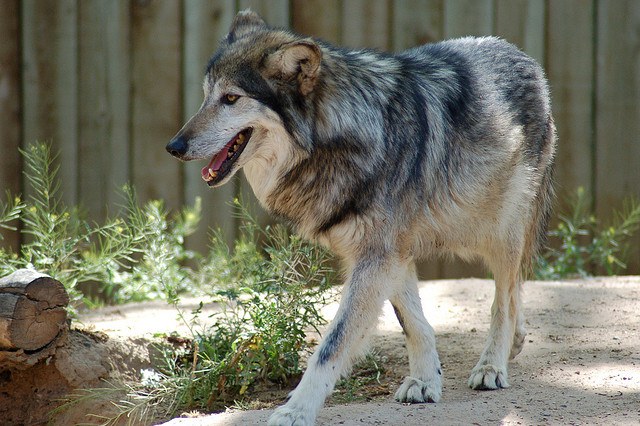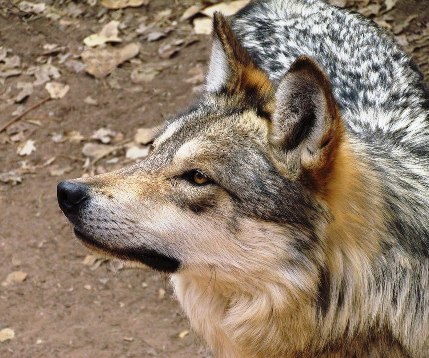
Year of the Wolf
After a decade-long breeding hiatus, more Mexican wolf pups may be in the future for the ABQ BioPark.
March 1, 2016—After about a 10-year break, the ABQ BioPark Zoo is slated to return to breeding one of the state’s most beloved native animals—the Mexican gray wolf.
Female Kawi is the newest Mexican gray wolf to come to the zoo. She came to Albuquerque in early 2016 from Mexico, and is recommended for breeding with male Apache.
Fortunately, the BioPark knows a thing or two about Mexican wolf pups. After all, the zoo welcomed 69 of them between 1983 and 2005.
Although they once roamed throughout New Mexico, Texas, Arizona and Mexico, Mexican wolves were all but eliminated from the wild by the 1970s.
“Top predators in a natural environment are very important and unfortunately, a lot of top predators tend to be wiped out and that happened to the Mexican wolf, “said Shelly Dicks, ABQ BioPark Zookeeper Supervisor.
In response, the US Fish and Wildlife Service (USFWS) launched a reintroduction program that included a captive breeding program.
“We’ve been an important cog in the wheel in their reintroduction,” said Dicks. “We’re very proud of our role in the reintroduction and I hope we can continue to be a part of it for a long time.”
All of the Mexican gray wolves that reside at the BioPark and other facilities belong to the USFWS—these facilities are an important part of helping the agency maintain and grow a healthy population. USFWS started releasing captive-bred Mexican gray wolves into the wild in 1998 and today there are about 100 in New Mexico and Arizona.
Though the zoo hasn’t bred wolves in about a decade, over the years it remained an important holding facility for non-breeding wolves (like 16-year-old Jasmine, who will live out her life at the BioPark) and those that are in between other facilities.

Kawi and Apache are part of a Species Survival Plan (SSP) with the Association of Zoos and Aquariums (AZA)—the goal of SSPs is to cooperatively manage specific, and typically threatened or endangered, species at AZA-accredited facilities. In this case, the USFWS works closely with the AZA to manage the Mexican gray wolf population.
Most animals that are part of an SSP don’t necessarily get to choose their mate—that is determined by a special committee within the AZA. The committee chooses mating pairs based on a number of factors, including genetics, age and temperament.
That said, the zoo is enthusiastic about Apache and Kawi hitting it off—although animals don’t usually pick their own mates, it usually works itself out, said Dicks. To help get the two wolves on the right “paw” from the start, staff will slowly introduce Apache and Kawi while closely monitoring their behavior—there is no physical contact between animals until staff is sure they’re ready to be together. When staff is satisfied that the two are a match, they’ll let them out together in the Mexican gray wolf exhibit (brothers Louie and Atlas currently reside here, and they’ll be pulled off exhibit to make room for Apache and Kawi).
Although the BioPark participates in a number of SSPs for various endangered species, Mexican wolves hold a special place in the hearts of staff because they are a New Mexico native species.
“We agree that it’s important to get these top predators into their wild habitat,” said Dicks. “This is one of our home-grown animals and part of our natural environment, so that makes it very special to us.”
Story: Tina Deines

